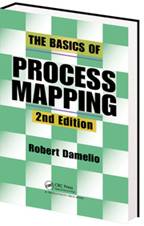Body
 |
The bestselling first edition of this influential resource has been incorporated into the curriculum at forward-thinking colleges and universities; a leading vocational technical institute; many in-house corporate continuous-improvement approaches, including Six Sigma; and the United Nations’ headquarters in New York.
|
Providing a complete and accessible introduction to process maps, The Basics of Process Mapping, Second Edition by Robert Damello raises the bar on what constitutes the basics.
…
Want to continue?
Log in or create a FREE account.
By logging in you agree to receive communication from Quality Digest.
Privacy Policy.
Add new comment